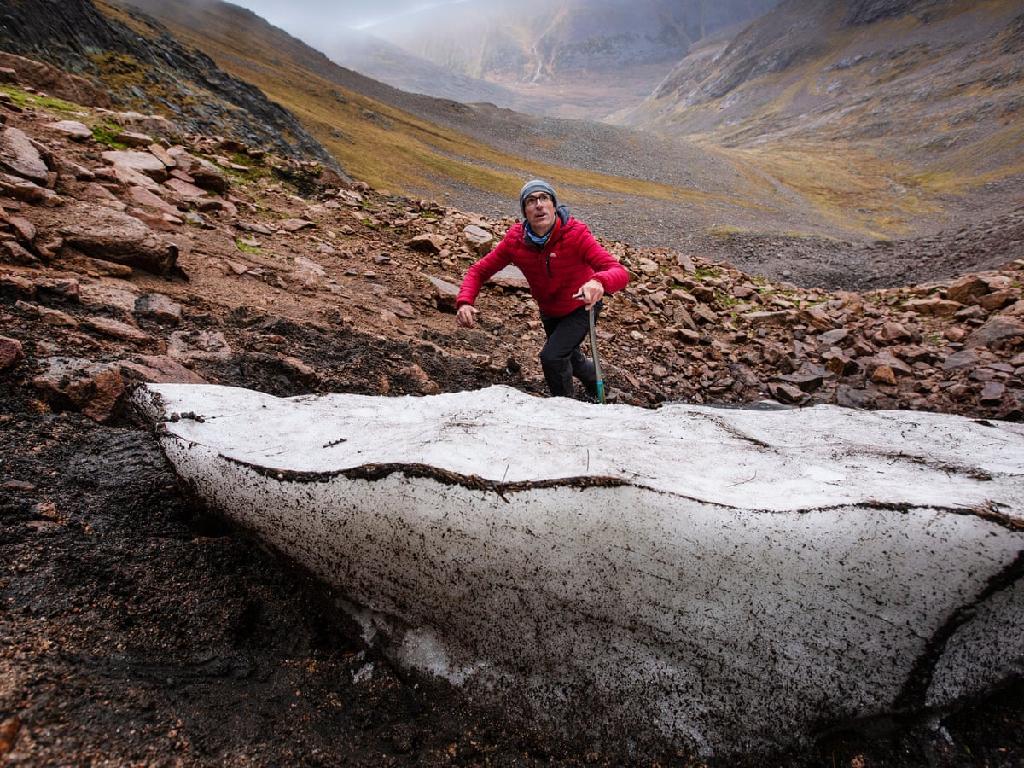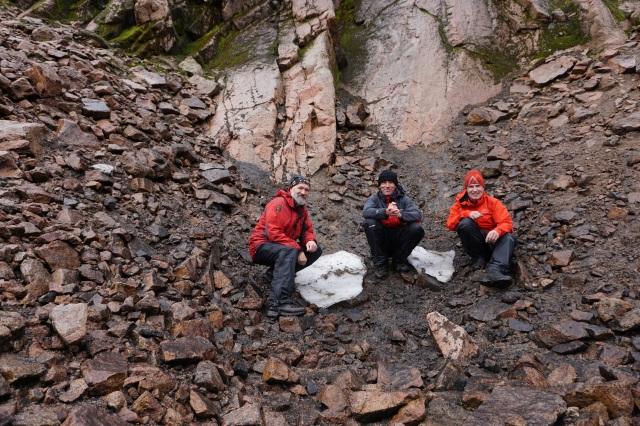The Snow Lover
Posted by Jeremy Windsor on Oct 28, 2022
As the Scottish mountains emerge from winter, isolated snow patches can sometimes survive intact for many months. Iain Cameron has dedicated much of his adult life to documenting them and has, as a result, produced a fascinating record of how climate change is directly affecting the UK. Through his new book, "The Vanishing Ice", Iain has created a "eulogy to snow, the mountains and the great outdoors", that really shouldn't be missed. We asked Tony Page to tell us about it...
Over the years most of my Scottish mountaineering trips have been in autumn and winter and, apart from a few trips to Skye, I’d done little in the Highlands in the summer. Perhaps this explains my surprise when, exploring the Loch Treig Munros early one July, my son and I came upon a very large patch of hard snow as we descended northwards off Chno Dearg towards Fersit. This was summer, after all. But now tha I’ve read Iain Cameron’s absorbing book The Vanishing Ice: Diaries of a Scottish Snow Hunter I realise that perhaps I shouldn’t have been so surprised. I learned that on 1st July, every year since 1974, an annual Scottish snow survey has been carried out. The location from which observations are made is Meall Odhar, a shoulder of one of the Glenshee Munros, and the purpose is to count every patch of snow visible east of the A9. Although Chno Dearg lies west of the A9 and wouldn’t be eligible for inclusion, that year the survey recorded 650 individual snow patches so perhaps, even in more westerly areas, snow patches in early July would not have been so uncommon.

Iain Cameron inspecting "The Sphinx" - one of Scotland's most enduring snow patches. Situated high on the slopes of Braeriach at a height of 1160m, it has in recent years disappeared with increasing regularity
But as we know, things are changing. Worryingly, Cameron notes that the mean annual survey total of visible snow patches for 1974-1989 compared with the mean annual total for 2004-2019 shows a reduction of more than half from 1218 to 465. Not only that, but the pattern of persistence of snow patches in the Highlands is changing too. Between 1996 and 2019 all the snow lying in Scotland vanished four times (in 1996, 2003, 2006 and 2017) whilst in the previous 200 years this had only happened twice. For observations like these, we have to thank Cameron and his predecessors, people he terms chionophiles (from the Greek- snow lovers). He is at pains to point out that he is not a scientist (he trained as an electrician and now works managing risk in the construction industry), but I think he is being overly modest here. Where would climate change modellers be without observational data to work on?
These data, though important, are only a small part of what the book is about. Most of it is about Cameron’s passion (and that of others before him, including his mentor Adam Watson and, it seems, that of an increasing number of chionophiles) to seek out and measure snow patches through the summer and into the autumn. Cameron does not write with a narrow focus, however, and although his mountain journeys are frequently undertaken to record and monitor a particular snow patch, the book is also about those days out in the hills. Sometimes this is on skis, sometimes with axe and crampons, often visiting inaccessible corries rarely visited by other people. In passing he describes the mountaineering judgments that have to be made, such as working out the safest route across unstable scree or trying to make the best of the weather. He refers to the plants and animals he encounters along the way and delights in the discovery of snow tunnels, those rare but beautiful passages sculpted by wind and burn. He even ventures south of the border in search of snow patches, discerning a ‘Britishness’ in upland areas that, for him, link the landscapes of the Lammermuirs with the Welsh Marches and the Lake District with the Trossachs.

Iain writes, "the experience of going to see these sickly patches of snow, year after year, is akin to visiting an elderly relative. If one visits and the snow is bigger than you hoped, your own mood and spirits rise accordingly. If the patch is much smaller than expected, a feeling of sadness descends. Absurd, of course, but such are the vagaries of the seasoned snow patch observer..." (Image: Susan Todd)
As a modern-day chionophile he is keen to interact on social media - those photos you post about your day in the hills might just show a small patch of snow somewhere in the background that could save him a trip! Even better if someone sends him a picture of a snow patch he thought had melted, or (unusually) he didn’t know about. But social media is, of course, a two-edged sword. Ruefully, he describes posting some interesting and provocative views on what kit a summer hillwalker should have in their rucksack and, though he still posts on Twitter, the nature of some of the replies has led him to disengage from online dialogue. At the end of the book there is a section titled ‘Get involved’ with an encouragement for people to report old snow patches they discover either to dedicated pages on Facebook or to his own page on Twitter.
Admittedly, chionophilia is a niche pastime and may not be your cup of tea. However, as I hope I’ve indicated, Cameron’s book is much more interesting than you might have thought and Muriel Gray was right when, in the blurb on the front cover, she described Cameron as, ‘A man who can make staring at snow not just interesting, but fascinating’.
Thanks Tony! Read Tony's review of Ed Caesar's "The Moth And The Mountain" here.
Iain will be taking part in the next BMMS UCLan Mountain Medicine Winter Webinar on November 29th 2022. Places are FREE. For further details take a look at this.
Comments
Leave a comment.
Leave a comment.



 )
)